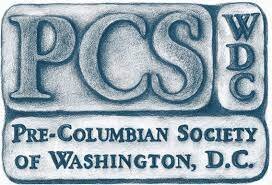This talk explores the significance of acts of human representation in Preclassic Mesoamerica, or the years from about 1800 BCE to CE 250. It considers not only monumental stone sculptures, like the famous colossal heads of the Olmec, but also small, palm-sized, hand modeled ceramic figurines, which were abundant throughout Preclassic Mesoamerica. Many of these human representations are fragmentary; sometimes a single body part, such as a head, stood in for the entire body. In other cases, we see evidence of deliberate bodily fragmentation or the segmentation of once complete wholes into their constituent parts. In Preclassic Mesoamerica, human figuration and fragmentation attest to ancient conceptualizations of personhood and the relationship of the individual to the community. These histories of human representations and their durations or—as it turns out, in the case of ceramic figurines—their demise, speak to the sociopolitical significance of human representation; they reveal who had the privilege to utilize durable representations and who, with time, was deprived of that privilege.
Julia Guernsey, PhD, is the D.J. Sibley Family Centennial Faculty Fellow in Prehistoric Art in the Department of Art and Art History at the University of Texas at Austin. Her research and publications focus on the Middle and Late Preclassic periods (1000 BC to 250 AD) in ancient Mesoamerica. Her most recent book, published by Cambridge University Press in 2020 and titled Human Figuration and Fragmentation in Preclassic Mesoamerica: From Figurines to Sculpture, examines the relationships between human figuration, fragmentation, bodily divisibility, personhood, and community in ancient Mesoamerica. Her co-edited volume, with Michael Love, is due out in the summer of 2021 and titled Early Mesoamerican Cities: Urbanism and Urbanization in the Formative Period (Cambridge University Press). Her previous books include Sculpture and Social Dynamics in Preclassic Mesoamerica (Cambridge University Press, 2012), Ritual and Power in Stone: The Performance of Rulership in Mesoamerican Izapan Style Art (University of Texas Press, 2006), The Place of Stone Monuments: Context, Use, and Meaning in Mesoamerica’s Preclassic Transition (Dumbarton Oaks, 2010, with John Clark and Bárbara Arroyo), Sacred Bundles: Ritual Acts of Wrapping and Binding in Mesoamerica (Boundary End, 2006, with Kent Reilly). She continues to participate with ongoing analysis of materials from archaeological excavations at the site of La Blanca, Guatemala.

